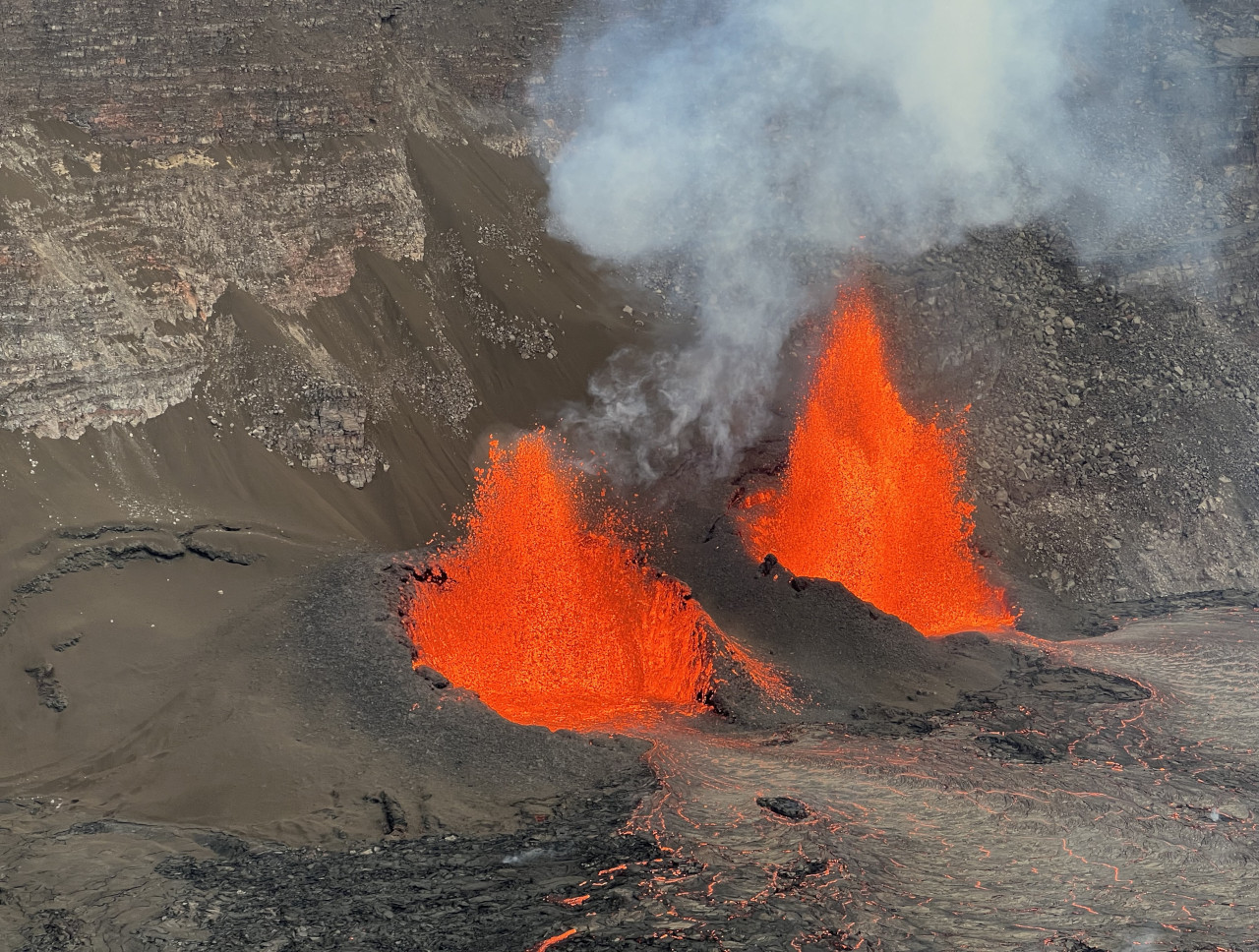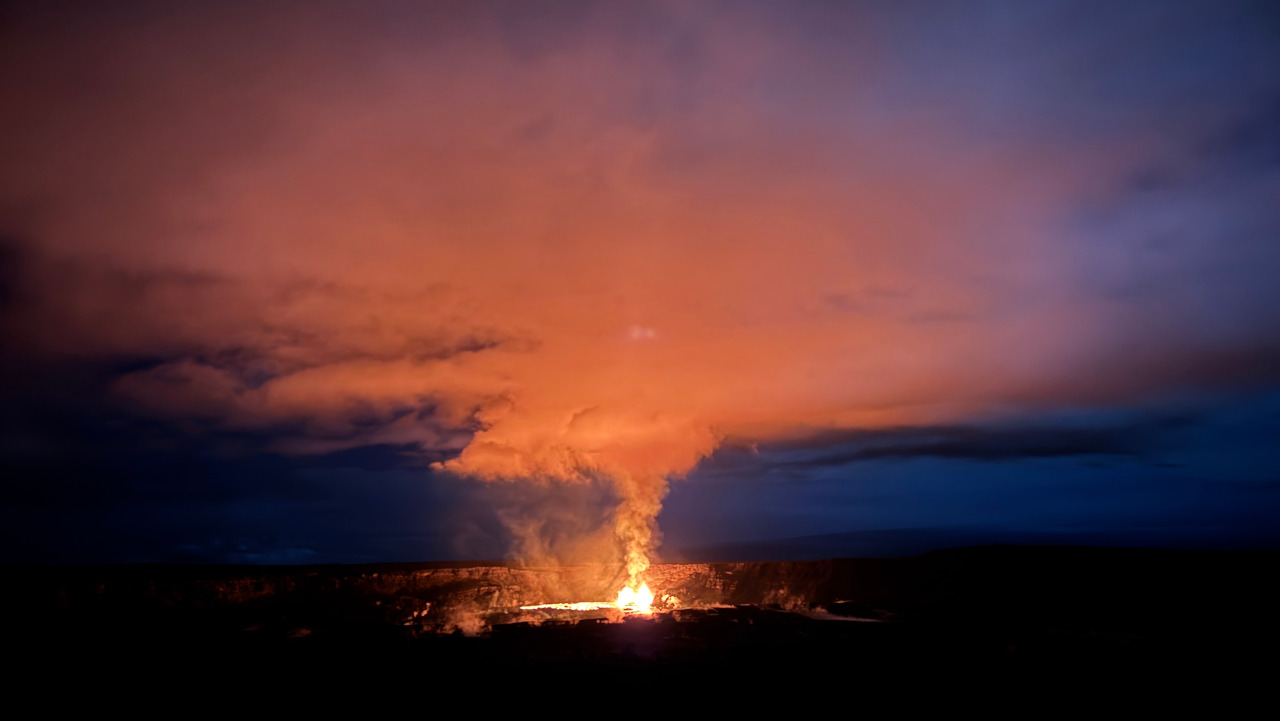
USGS: “USGS Hawaiian Volcano Observatory scientists observe the continuation of the ongoing Kīlauea eruption during its fourth eruptive episode. The eruption had been paused since January 3, 2025, and resumed on January 15, 2025. Today, January 16, 2025, the south fountain (left) has an average height of about 40 meters (131 feet), and the north fountain (right) ranges in height between 50–60 meters (164–197 feet). Fountain heights have slightly decreased in height from yesterday’s maximum measured fountain heights of 90–100 meters (295–328).” (USGS photo by H. Winslow)
(BIVN) – The sights and sounds of the Kilauea summit eruption have been captured, up-close, by geologists with the USGS Hawaiian Volcano Observatory.
The scientists were under a sky of falling tephra on Wednesday, as the 4th episode of the on-again, off-again eruption grew more vigorous, sending glassy lava particles tinkering onto the closed portion of Crater Rim Drive in Hawaiʻi Volcanoes National Park.
At the time, lava fountains were reaching heights of 100 meters, or 328 feet.
USGS HVO says there have been reports of Pele’s hair falling on nearby communities on Thursday morning, specifically the Volcano Golf Course subdivision.

USGS: “Early morning view of the ongoing Kīlauea eruption within Halema’uma’u in Kaluapele (the summit caldera) on January 16, 2025. This telephoto view is from the Volcano House overlook within Hawaiʻi Voclanoes National Park.” (USGS photo by K. Mulliken)
By mid-day Wednesday, two vents were active within the summit caldera. Lava fountains continued overnight, and on Thursday parts of the south vent collapsed. Lava flow activity has remained confined to the southwest crater floor area near the active vents.
The seismic tremor in the summit region that began with the start of this 4th episode has remained high, reflective of ongoing eruptive activity.
The sulfur-dioxide emission is estimated to have jumped up to approximately 10,000 tonnes-per-day on the onset of the new episode.
The USGS Alert Level for Kilauea remains at Watch, with no unusual activity noted along the East or south-west rift-zones.

by Big Island Video News7:09 pm
on at
STORY SUMMARY
HAWAIʻI VOLCANOES NATIONAL PARK - USGS HVO scientists have recorded stunning views of the latest eruptive episode at the summit of Kīlauea.